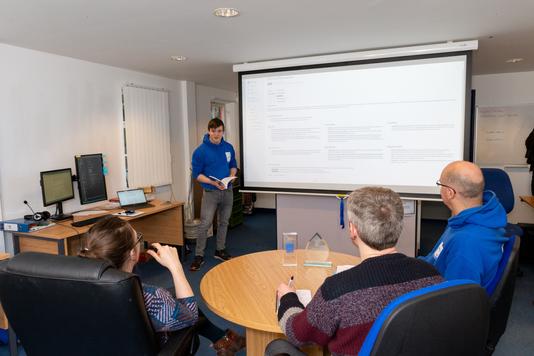
The Mesomorphic Guide to Holding Your Own Retrospective
- By Maria Bell
- 23 March
We showed the value of a retrospective during our last blog. Now it's time to find out how to have one of your own!
Keeping communication lines open can be an issue whether working remotely or in the same building. This blog looks at some of the tools availiable and how we achieve it in Mesomorphic.

Part of the Remote Working series:
Part 1: The Mesomorphic Guide to Working From Home
Part 2: Communication When Working Remotely
Part 3: You Can With a Kanban
Part 4: Looking Back Over Our First Week of Having a Fully Remote Team
Part 5: The Mesomorphic Guide to Holding Your Own Retrospective
Communication is vital for remote working regardless of the size of your team. In this blog we will look at some of the tools readily available and discuss some of the processes we have at Mesomorphic to ensure communication is at the heart of our company.
Before looking at the various tools and techniques out there, it’s important to understand that in order for communication to be successful, it needs to be a part of company culture. There are some limitations on what data can be shared due to legislation however aside from that, why shouldn’t everything be visible? In Mesomorphic, all team members have access to our financial overview, sales pipeline and project information. Important points raised in emails are captured in one of our communication channels and they are also discussed at stand up. We also hold VR and curry nights where we discuss the company as a whole as it provides a good open environment for the whole team to feedback. Our curry nights may need to be virtual for a while, but the principle can still continue even if we are all working remotely. It can be a bit of a mind shift, however if all company communications are transparent then that makes lines of communications easier to manage.
We briefly discussed this during our Working From Home Guide . We do this every morning in the office, dialing in those who are working remotely. This process is a really useful tool to get an understanding of what the team are working on and whether there are any impediments. Each team member is limited to 30 seconds to prevent the stand up from going on for too long. If you have quite a varied role, like me, it is surprisingly difficult to condense the important information into 30 seconds so before our stand up I review what I want to say before our session so I know I can keep within my timeslot. Generally speaking, it’s best to do this in the morning before you get cracking on with the rest of your day. There have been occasions where we have had to do it in the afternoon and it does break the flow of the day, so best practice is to choose a time, and stick to it. I’d also suggest marking it in your calendar, so that no company meetings clash with this time. If a meeting is unavoidable during the time marked for stand up, make sure the rest of the team still go ahead and a summary is sent to colleagues for them to review when they’re back at their desk.
If you work in a larger organisation, it is still possible to use this stand up technique in your company. Each department can have their stand up between themselves so everyone in that department is up to speed with their coworkers. Following that, a department representative will repeat the process with other department heads so that the whole company is aware of each department’s actions and impediments. It may take a bit of getting used to in the beginning, however I promise you as you become more efficient at holding Stand Up you will reap the rewards.

There are numerous team collaboration tools out on the market, monday.com, Microsoft Teams, to name but a few. Each company is unique, so it’s important to put a bit of time aside to really investigate which one matches your needs. We use a tool called Slack which has a free and unpaid tier. We find this particularly useful as you can have multiple channels focusing on different areas of the company. We also have project specific channels, some of which we share with clients. As we use the paid service, we are able to add guest users to channels (1 paid user can have 5 free guests) and it helps ease communication with clients. It supports written and verbal communication, with the ability to have video conferences. It also allows you to share documents and images. Another feature we enjoy in the office is that you can even create your own emojis!
Combined with Slack, we use a couple of Atlassian tools to provide clear visibility of what is being worked on in a project and where it is in our development process. In Jira, individual tasks are assigned a unique ticket number e.g. MESO-32 and it is displayed in the project overview. There is a Wiki tool which comes with Jira provides the platform for more padding to be put around the project for example user personas, blogs, retrospectives and meeting notes. If you’re working with a budget, Trello, another Atlassian tool has a free and paid tier. Trello works in the same way as Jira however we found that there were some limitations mapping it to our workflow. We do however use it with our work experience students to give them a flavour of the tools which we work with in the office.
As a case study for visibility, Garry Jamieson of Jamiesons Spinning Mill has kindly agreed for us to use Handspun as an example of a system we developed to increase visibility in their manufacturing process. Before Handspun, a paper based system had been developed over the years which matched their processes perfectly. The issue was however, that there was no visibility of what produce was at which stage for production decisions to be made. Seeing as the paper process worked so well, we didn’t want to change it. So the system we designed took their paper process, and digitised it. Using QR codes, and their phones, users now mark the orders as they move through the process. This allows management to run reports to see what is at each manufacturing stage to guide business decisions. Jamiesons Spinning Mill has this to say about their system:
Handspun has allowed staff to be able to check yarn stock levels, see what yarns are in production and at which stage in the factory, at a glance. This information can be viewed from the factory, our retail shop and even at home. This has had a significant impact on time for staff who previously had to search the factory to find out this information. We are also now able to answer queries from our customers about stock levels and production information there and then without having to wait until back in the factory to find out
Clear lines of communication and visibility are good qualities to have in a company, and it’s incredibly important to keep this in mind when working remotely. There are so many different tools out there readily available, so now is a good time to start thinking about how your company can utilise them. Perhaps you have these tools in place already? If so, which ones? We’d love to hear from you. You can email us at contact@mesomorphic.co.uk or send us a message on one of our social media groups.

We showed the value of a retrospective during our last blog. Now it's time to find out how to have one of your own!
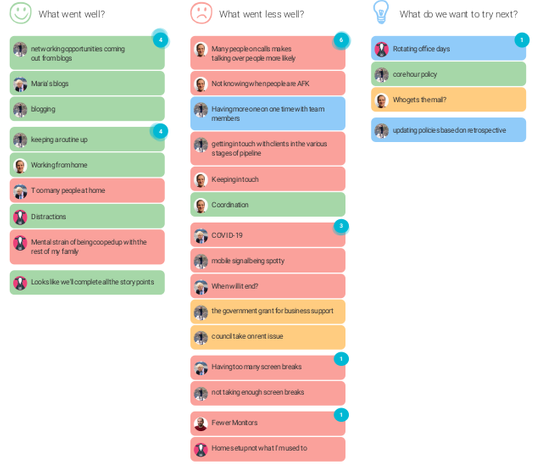
We're always looking at ways we can continuously improve our processes, so today we had a retrospective which focused on how this week has gone.
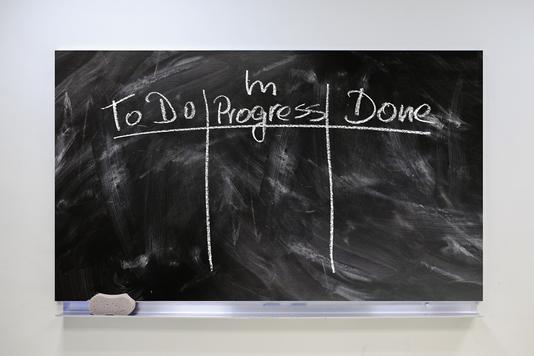
Task management is key for any organisation regardless of size and location. In this blog I will walk you through my own process for task management and look at how a Kanban board help keep tasks on track.
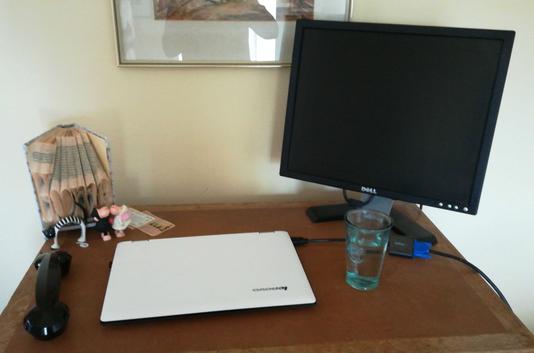
Working from home is not uncommon in the IT industry, so here is a quick start guide to get started.
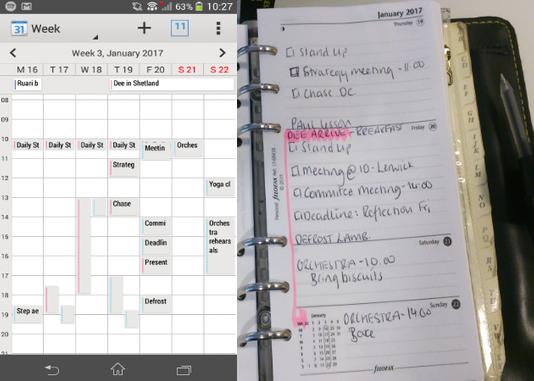
I'm going to be honest. Originally I had started writing this blog purely to discuss the benefits of using software in a business environment.
We would love to hear from you so let's get in touch!